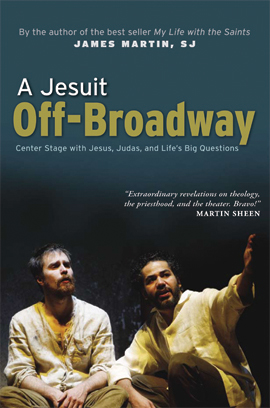
"Michelangelo and the Sistine Chapel,"
by Andrew Graham-Dixon
If you've ever taken a tour with a guide who wasn't connecting with his or her group, you come to appreciate really good tour guides, people who not only know their subject but engage you in the topic, bringing information, insight and even entertainment.
My wife and I had that excellent kind of guide -- Liz Lev -- with a group touring the Vatican Museums. Everything we saw became so much more meaningful thanks to a great guide who was able to help us see not just artistic value but intention and the works' place in history.
With "Michelangelo and the Sistine Chapel," Andrew Graham-Dixon offers much of the same insight to his readers.
It's not quite halfway into his book that the London-based art critic begins an absolutely thorough interpretation of Michelangelo's famous paintings on the ceiling and wall of the Sistine Chapel.
But that's because he sets up his art instructing by first giving readers a rather complete picture of the artist and his world at the beginning of the 16th century.
Inside Michelangelo's world
No piece of the life of Michelangelo Buonarroti is left untouched, and I came to feel that the biographical section of this book was as helpful and important for understanding the Sistine Chapel as the interpretation of the world-renown paintings itself.
We learn of the artist's family background, his training, his benefactors -- and most importantly his faith.
Graham-Dixon's analysis is that Michelangelo felt the hand of God in his life:
"Before he was ever chosen by the Medici, or the pope, he had been chosen by God. . . . He felt that he had been given his gifts by God, and charged with serving the purposes of the divine will."
Using those God-given skills then, "Michelangelo did not just invent a new kind of art, but a new idea of what art could be," Graham-Dixon claims. "He put his own sensibility, his own intellect, his own need and desire to fathom the mysteries of Christian faith, centre stage."
A superior user's guide
The heart of the book, written in observance of the 500th anniversary of the start of the work by Michelangelo in 1508, is Graham-Dixon's interpretation of the Sistine Chapel ceiling itself. While not ignoring style, he focuses on what Michelangelo meant by what he painted, how the pictures' meanings unfold, the subtle ways through which the artist gave expressive life to this amazing group of interlinked compositions.
As a user's guide to the Sistine Chapel, this book is superb.
Graham-Dixon walks us through each section and each panel of each section, pointing out not only beauty and the technical skill but why each figure is painted the way it is.
What we learn is that Michelangelo was a student of Holy Scripture -- especially the Hebrew Books -- and that he aimed to paint "his own vision of what he believed to be the eternal truths of Christianity," the author states.
Readers will come to understand the geography of the chapel ceiling, how the famous depiction of creation -- with God's pointed finger reading out to touch the finger of Adam -- fits into the rest of the biblical history, with the great cast of characters including Eve, Noah, David and Goliath, Judith, Jeremiah, Jonah and on and on.
Graham-Dixon gives his excellent interpretive skills to helping readers grasp in much the same way Michelangelo's "The Last Judgement," painted 15 years after the ceiling. Taking up the entire wall behind the chapel's altar, it is a monumental fresco as rich with meaning as the ceiling above.
Sadly, details of this beautiful work are depicted only in black and white photos, which hardly do justice to this colorful masterpiece.
Bigger would be better
And, if there is any fault at all in "Michelangelo and the Sistine Chapel," it is the small size of the pages -- six inches by nine inches. There are 32 full-color pages that bring the Sistine's ceiling right into our hands, but I couldn't help but think how much more delight to the eye would have been deivered in a larger format. Perhaps Skyhorse Publishing will be able to work that out in a later edition.
As it is, though, I compared the printing in this latest book with the same Sistine Chapel panels printed in a larger, coffeetable-sized book given to me as a gift several years ago.
The color work -- the brightness and the clarity -- in "Michelangelo and the Sistine Chapel" is far superior.
If you plan to visit the Vatican, take this along to read on the plane ride. It's a fact-filled yet easy read with the beautiful prose that is the hallmark of a fine writer.-- bz



No comments:
Post a Comment